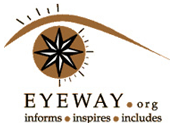If you have a disability, what’s the hardest thing about browsing the web?” The answers to Safia Abdalla’s tweet are truly eye-opening and shows us what web accessibility should really be about.
In this article I’ll summarize and group the main topics that people bring up in the thread.
But do click on the tweet and read through all the answers. It’s an awesome read for anyone interested in making the web a better place for all. And, in my opinion, a far better place to learn about accessibility than reading any checklist or standard.
LACK OF CAPTIONS
Videos without captions (subtitles) was by far the obstacle that most people commented on. Here is what a few had to say:
Non-existing captions is something that can completely exclude users who are deaf or hard of hearing. But it affects many others as well. Anyone on the bus who forgot their headphones. Or some autistic users:
Many are hoping that automatic captioning solves this problem. But alas, not yet!
And the auto-captioning feature sadly isn’t available for most languages. So it’s still up to the video creators to caption.
MOTION, ANIMATIONS AND CLUTTERED PAGES
Motion and animation can be annoying to anyone, but is extra frustrating to many users with cognitive impairments:
Do your users a favor by not distracting them with autoplaying videos, advertisements or image carousels.
WALL OF TEXT
Many replies, especially from people with dyslexia or cognitive impairments, were about large chunks of text.
Source: https://axesslab.com/accessibility-according-to-pwd/

Facebook comments